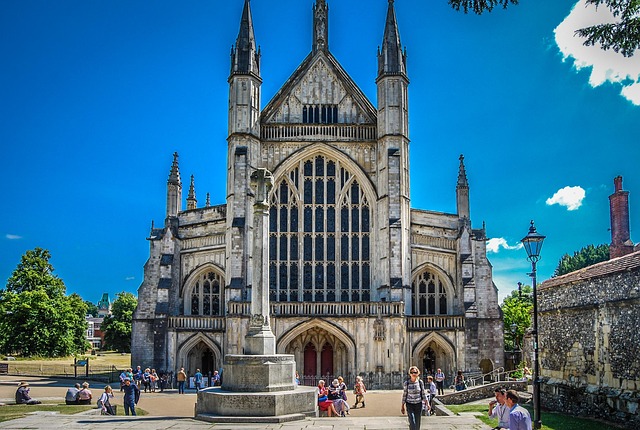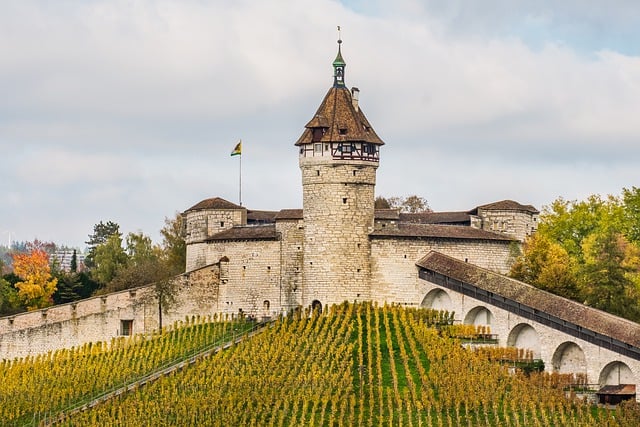Lane County, Oregon, excels in historical preservation through collective community efforts, transforming historic sites into a thriving tourism industry that benefits local economies. The county's diverse cultural treasures, from Native American artifacts to charming old towns, are safeguarded via museums, tours, and events. Local organizations collaborate with residents to restore landmarks and maintain unique character, fostering a deeper connection to the past. This balanced approach ensures Lane County's historical preservation while providing meaningful experiences for tourists interested in its rich heritage.
“Lane County, Oregon, boasts a rich historical landscape that attracts visitors seeking to unlock its past. From bustling historic towns to serene cultural heritage sites, the county’s efforts in lane county historical preservation have fostered a thriving tourism industry. This article explores the impact of historic site tourism on local communities, delving into the economic benefits, challenges, and sustainable practices surrounding Lane County’s cultural heritage. Discover how these initiatives ensure the preservation of its unique historical tapestry for future generations.”
- Lane County's Rich Historical Landscape: Unlocking the Past
- Preserving Lane County's Cultural Heritage: A Community Effort
- The Rise of Historic Site Tourism: Attracting Visitors
- Economic Impact: How Tourism Benefits Local Communities
- Challenges and Conservations: Protecting Historic Sites Today
- Planning for the Future: Sustainable Historical Preservation in Lane County
Lane County's Rich Historical Landscape: Unlocking the Past

Lane County, Oregon boasts a rich and diverse historical landscape that draws tourists from near and far. The county’s past is woven into its scenic landscapes, vibrant communities, and cultural treasures, offering visitors a unique opportunity to step back in time. From Native American artifacts and historic settlements to charming bygone towns and meticulously preserved architecture, Lane County serves as a living testament to its deep historical roots.
The area’s commitment to historical preservation ensures that these stories remain intact for future generations. Local organizations and dedicated residents work tirelessly to protect and interpret these cultural resources, making them accessible through museums, self-guided tours, and immersive experiences. This focus on Lane County historical preservation not only preserves the past but also enriches the present by fostering a deeper understanding and appreciation of the county’s unique identity.
Preserving Lane County's Cultural Heritage: A Community Effort

Lane County, Oregon, boasts a rich cultural heritage that draws visitors from near and far. Preserving this legacy is a collective effort involving local communities, historical societies, and dedicated individuals who understand the value of protecting their shared history. Through various initiatives, they strive to maintain the county’s unique character and tell its stories for future generations.
One of the key aspects of Lane County’s historical preservation is the community-driven approach. Local residents actively participate in restoration projects, sharing knowledge passed down through families. This grassroots movement ensures that cultural traditions and historic sites remain vibrant. By collaborating with historians and experts, they preserve and restore significant landmarks, making them accessible to tourists and locals alike. These efforts not only enhance the tourist experience but also foster a deeper connection to the area’s past.
The Rise of Historic Site Tourism: Attracting Visitors

In recent years, historic site tourism has emerged as a vibrant sector in Lane County, Oregon, contributing significantly to the local economy and fostering an appreciation for the region’s rich history. The county’s commitment to historical preservation has played a pivotal role in attracting visitors interested in exploring the past. Through meticulous restoration projects and the establishment of well-managed sites, Lane County offers a unique glimpse into its diverse cultural heritage. These historic locations range from charming old towns and iconic landmarks to museums showcasing artifacts that tell compelling stories of bygone eras.
The appeal lies in the ability to transport visitors back in time, allowing them to walk through history and immerse themselves in the county’s past. Carefully curated tours and interactive exhibits engage guests, sparking curiosity and a deeper understanding of Lane County’s historical significance. As a result, tourism has become a powerful tool for economic growth while also preserving the area’s cultural identity, making it an appealing destination for both locals and visitors seeking authentic experiences.
Economic Impact: How Tourism Benefits Local Communities

Tourism plays a pivotal role in enhancing the economic landscape of Lane County, Oregon, through its positive impact on local communities. The influx of visitors to historic sites and cultural attractions injects significant funds into the regional economy. Local businesses, from accommodation providers to restaurants and retail shops, benefit directly from tourism, leading to increased employment opportunities and improved standards of living for residents.
The economic boost from tourism also facilitates Lane County’s historical preservation efforts. The revenue generated supports the maintenance and restoration of historic sites, ensuring these cultural treasures remain intact for future generations. This sustainable approach to tourism not only enriches the local economy but also strengthens the county’s commitment to preserving its rich history and heritage.
Challenges and Conservations: Protecting Historic Sites Today

The preservation of historic sites in Lane County, Oregon, presents a delicate balance between preserving the past and catering to the present’s demands for tourism. One of the primary challenges is ensuring that visitors can appreciate these historical locations while minimizing damage or disruption to the structures themselves. With an increasing number of tourists flocking to discover Lane County’s rich history, managing visitor flow becomes crucial. Overcrowding can lead to erosion of precious artifacts and landscapes, as well as a diminished experience for visitors who expect well-maintained sites.
Conservation efforts require dedicated resources and expertise. Lane County historical preservation societies and local governments play vital roles in protecting these sites through restoration projects, educational initiatives, and strict regulations. By implementing sustainable tourism practices, such as limited access during renovation periods, controlled visitor routes, and regular maintenance, the county can safeguard its historical treasures for future generations while offering meaningful experiences to tourists interested in the region’s heritage.
Planning for the Future: Sustainable Historical Preservation in Lane County

Lane County, Oregon, recognized the importance of its rich history and cultural heritage, has made significant strides in implementing sustainable historical preservation practices. The county’s focus on future-proofing its historic sites involves a comprehensive approach that includes community engagement, environmental stewardship, and innovative interpretation strategies. By prioritizing these aspects, Lane County aims to ensure that its historical treasures remain intact for generations to come while also enhancing the visitor experience.
Through collaborative efforts between local governments, cultural organizations, and residents, the county has developed master plans and conservation guidelines tailored to each unique historic site. These initiatives not only preserve the physical structures but also integrate modern sustainability principles. Interpretive programs that tell compelling stories of the past are being reimagined with interactive digital media, making history more accessible and appealing to diverse audiences. Simultaneously, Lane County is committed to minimizing the environmental footprint of tourism by promoting eco-conscious practices among visitors and local businesses, thereby fostering a harmonious relationship between historical preservation and sustainable tourism.






